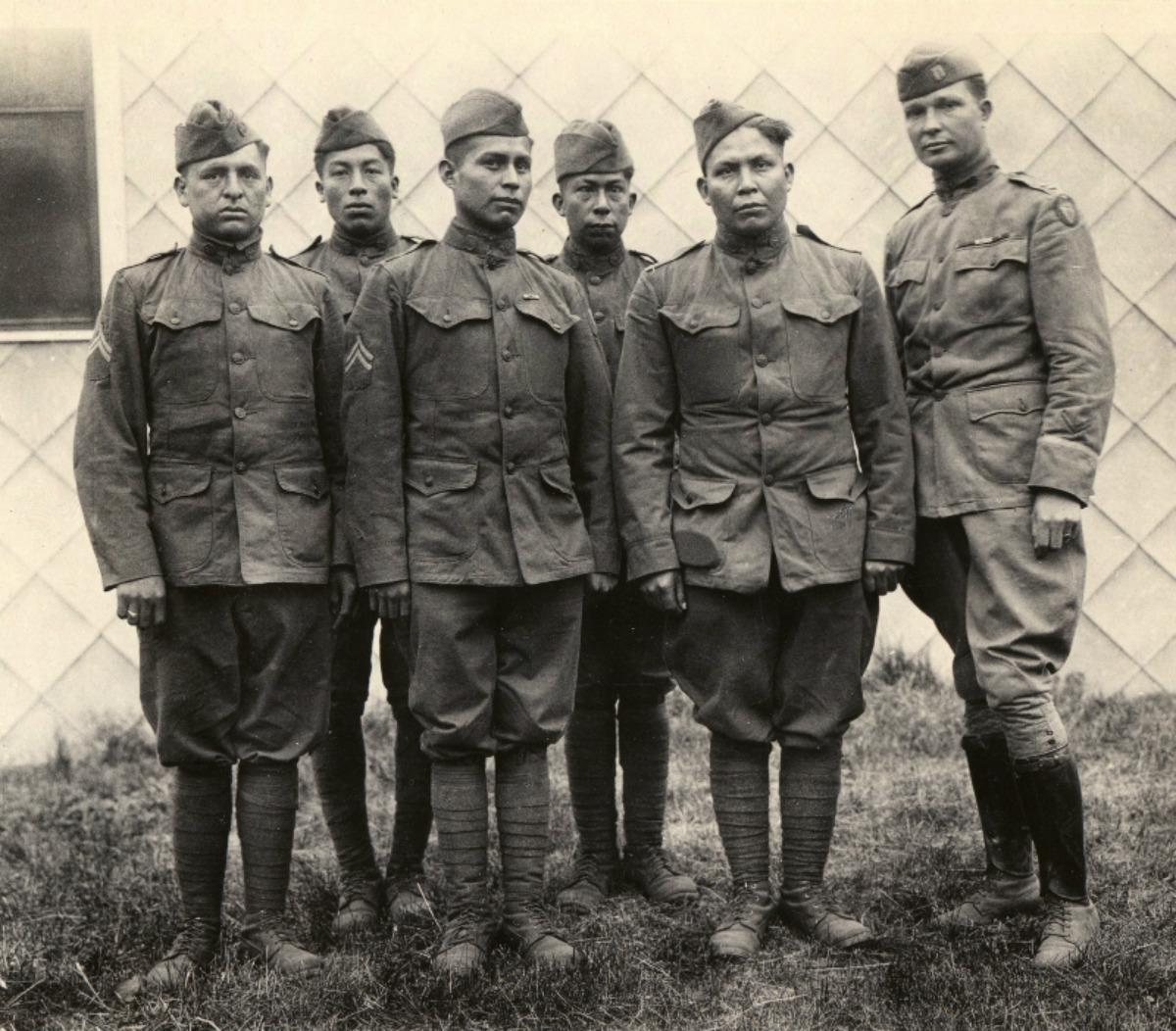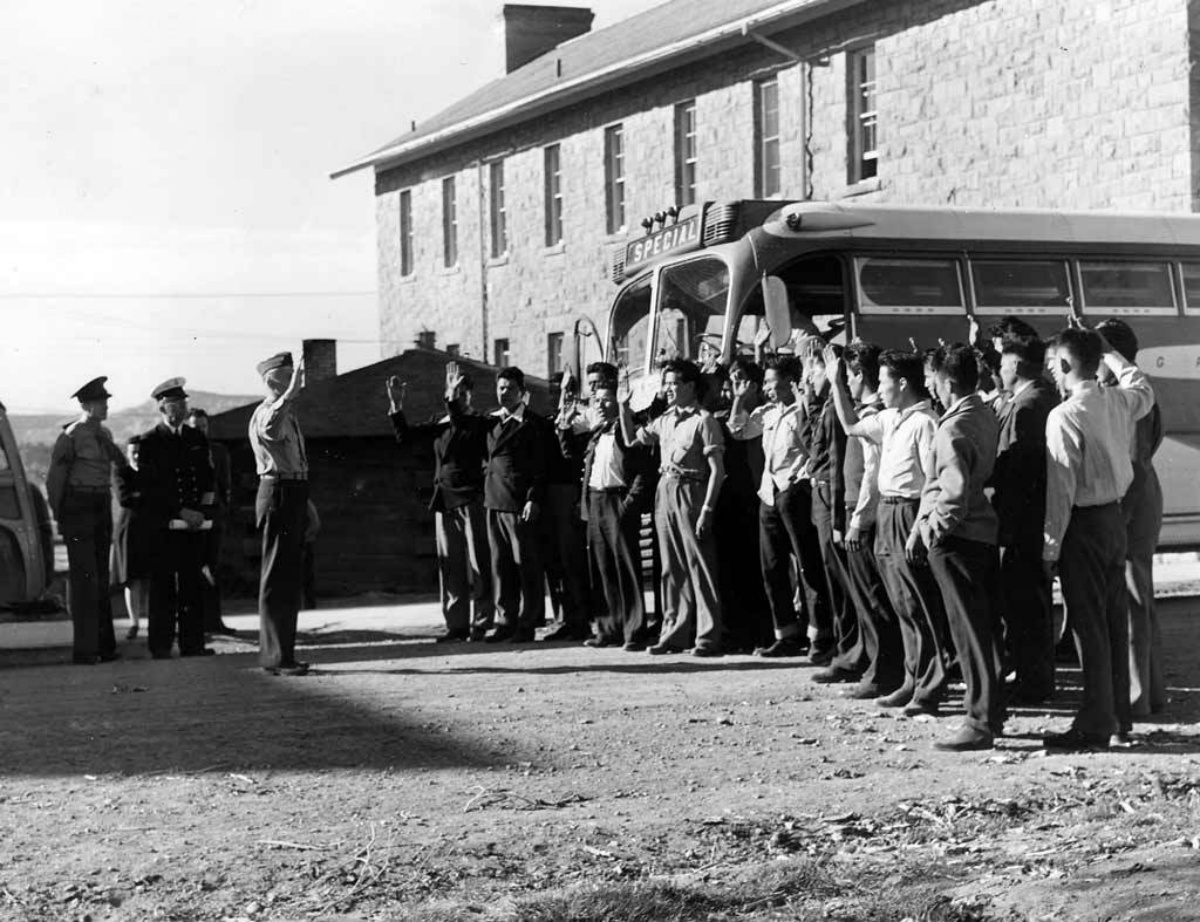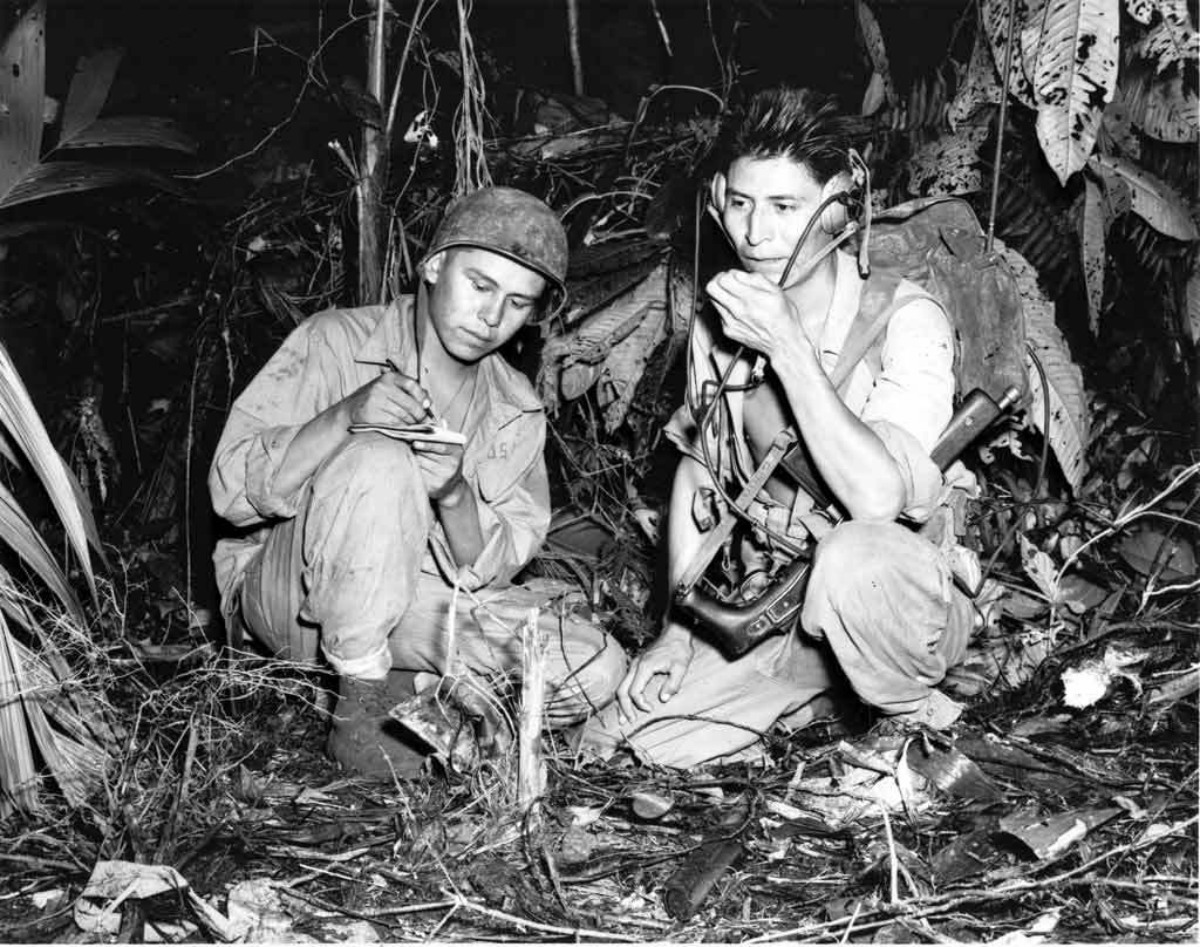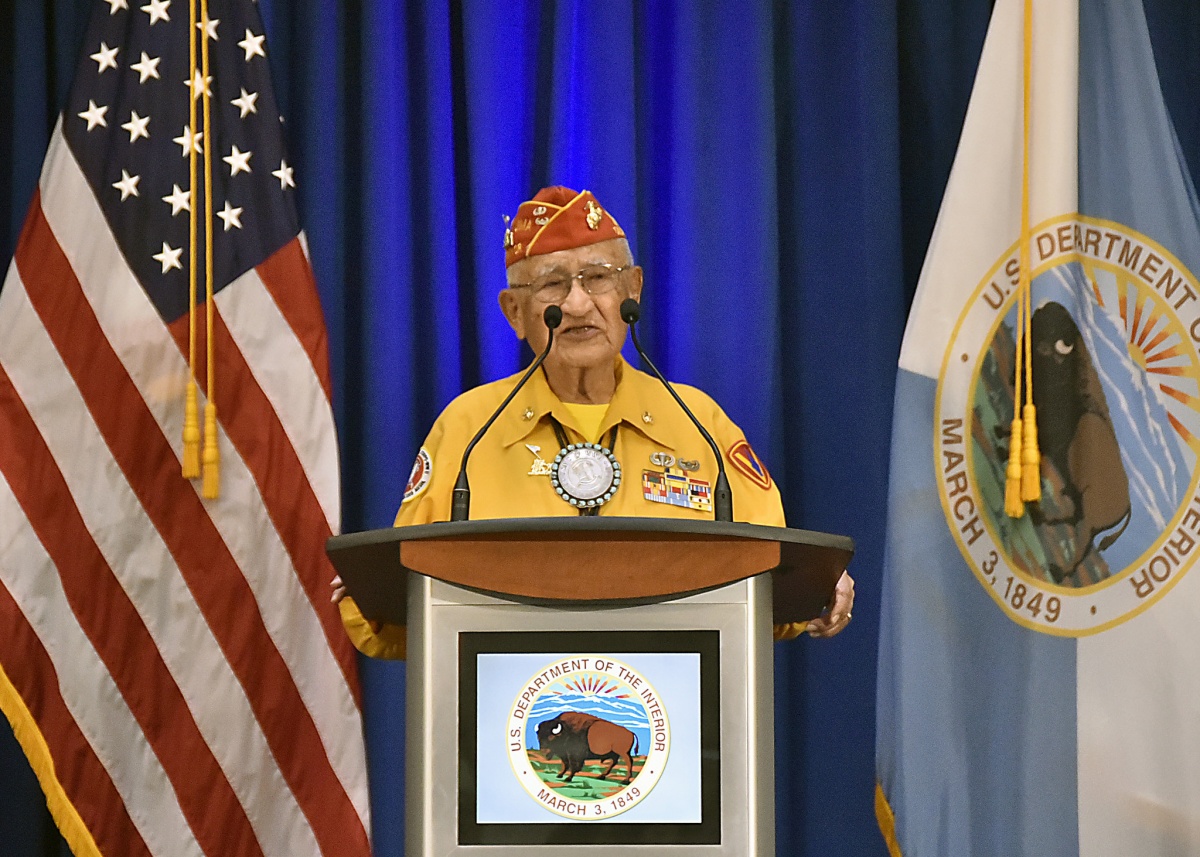With both Veterans Day and Native American Heritage Month in November, now is a great time to tell the stories of these heroes.
 Choctaw Code Talkers in France during World War I. Photo courtesy of the U.S. Army.In World War I, soldiers of Native American descent, mostly Choctaw, used their tribal languages to transmit messages by telephone. Though not used extensively, the actions of these men confused the Germans and helped win several battles in France.
Choctaw Code Talkers in France during World War I. Photo courtesy of the U.S. Army.In World War I, soldiers of Native American descent, mostly Choctaw, used their tribal languages to transmit messages by telephone. Though not used extensively, the actions of these men confused the Germans and helped win several battles in France. When the United States entered World War II, the military again called on Native Americans to be Code Talkers. Fearing that some of the previously used languages may have been studied by the Germans and Japanese between the wars, military leaders looked for a new code that was more complex. For the U.S. Marine Corps, the Navajo language quickly became the answer. It isn’t a written language and very few people not of Navajo origin understood it.
 The first 29 Navajo Code Talkers arriving at a training camp. Photo from the National Archives.In 1942, the Marine Corps began recruiting and training Navajo men to be Code Talkers. Carl Gorman was one of the first Navajo to join up. “For us, everything is memory, it’s part of our heritage. We have no written language. Our songs, our prayers, our stories, they’re all handed down from grandfather to father to children -- and we listen, we hear, we learn to remember everything. It’s part of our training.”
The first 29 Navajo Code Talkers arriving at a training camp. Photo from the National Archives.In 1942, the Marine Corps began recruiting and training Navajo men to be Code Talkers. Carl Gorman was one of the first Navajo to join up. “For us, everything is memory, it’s part of our heritage. We have no written language. Our songs, our prayers, our stories, they’re all handed down from grandfather to father to children -- and we listen, we hear, we learn to remember everything. It’s part of our training.”The first 29 Navajo Code Talkers created an phonic alphabet and used word substitution to develop an all but unbreakable code. “Fighter plane” became “hummingbird.” “Turtle” became “tank.” “”Battleship” became “whale.”
Other branches of the military recruited Native Americans from the Assiniboine, Cherokee, Cheyenne, Chippewa, Choctaw, Comanche, Cree, Crow, Hopi, Kiowa, Menominee, Meskwaki, Mississauga, Muscogee, Osage, Pawnee, Sac and Fox, Seminole and Sioux tribes to create similar military codes based on their own languages.
 Two Code Talkers fighting with the U.S. Marine Corps at the Battle of Bougainville in December of 1943. Photo courtesy of the U.S. Marine Corps.After the codes were established, trained Code Talkers joined combat units around the world. The Navajo and Hopi were assigned to service in the Pacific. Comanches fought the Germans in Europe, and the Meskwakis fought them in North Africa. Code Talkers from other tribes fought at various locations in Europe, the Pacific, North Africa and elsewhere. Because the code was considered to be so important, many Code Talkers were assigned guards and weren’t allowed to move around alone.
Two Code Talkers fighting with the U.S. Marine Corps at the Battle of Bougainville in December of 1943. Photo courtesy of the U.S. Marine Corps.After the codes were established, trained Code Talkers joined combat units around the world. The Navajo and Hopi were assigned to service in the Pacific. Comanches fought the Germans in Europe, and the Meskwakis fought them in North Africa. Code Talkers from other tribes fought at various locations in Europe, the Pacific, North Africa and elsewhere. Because the code was considered to be so important, many Code Talkers were assigned guards and weren’t allowed to move around alone.Fighting in the battles of Guadalcanal, Tarawa, Tinian, Saipan and the D-Day invasion of Normandy, Code Talkers saved lives by signaling enemy movements, transmitting orders and coordinating attacks under fire. Major Howard Cooper, a signal officer commanding Code Talkers, said “Were it not for the Navajos, the Marines would never have taken Iwo Jima.”
The Code Talkers were proud of their accomplishments in combat and communications. Navajo Thomas Begay would later say about the codes, “It means a lot to me. Nobody -- Japanese, no one -- ever decoded it.”
 Navajo Code Talker Thomas Begay speaks at an event at the Main Interior Building in 2016. Photo by the Bureau of Indian Affairs.Despite earning the respect of their fellow soldiers and marines, Code Talkers received no recognition on the home front. Their code and actions remained classified until 1968. As their role in the war became better known, Code Talkers have been celebrated in movies and television shows, and many have been awarded medals from Presidents and Congress.
Navajo Code Talker Thomas Begay speaks at an event at the Main Interior Building in 2016. Photo by the Bureau of Indian Affairs.Despite earning the respect of their fellow soldiers and marines, Code Talkers received no recognition on the home front. Their code and actions remained classified until 1968. As their role in the war became better known, Code Talkers have been celebrated in movies and television shows, and many have been awarded medals from Presidents and Congress.Combining the wisdom and warrior tradition of their tribes with modern day technology and tactics, Code Talkers earned their place as American heroes.
Source: DOI








